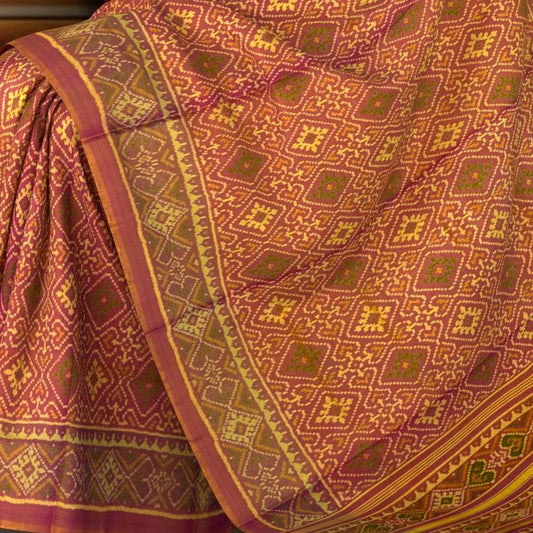Reviving Tradition: The Saree Makes a Grand Comeback as Official Attire at the Paris Olympics
The Paris Olympics, set to take place from July 26 to August 11, 2024, will not only be a platform for athletic excellence but also a stage for cultural pride and tradition. This year, Indian athletes will make a striking appearance in their traditional attire, with female athletes donning sarees and male athletes in kurta-pyjamas, a significant shift from previous years.

A Historical Perspective
India's journey in Olympic ceremonial attire has seen a variety of styles over the years. From the formal blazers and bandhgalas to the elegant sarees and kurta-pyjamas, the evolution of these outfits reflects India's rich cultural heritage and changing perspectives on national representation.
In the Rio 2016 Olympics, Indian female athletes wore sarees, a choice that was both celebrated and remembered fondly. However, this tradition was paused, and by the time of the 2018 Commonwealth Games and Asian Games, the saree was replaced with different traditional attires. The Tokyo 2020 Olympics, rescheduled to 2021, saw female athletes in golden salwar suits with jackets, while the men wore indigenous jackets with high collars.
The Decision to Go Traditional
The decision to bring back the saree and introduce kurta-pyjamas for male athletes at the Paris Olympics was met with enthusiasm and pride. This move, approved by the Indian Olympic Association (IOA) on May 28, 2023, was strongly supported by the Indian government, which emphasized the importance of showcasing traditional attire on an international platform.
The choice to revert to traditional clothing is not merely about fashion but a statement of cultural identity and pride. It signifies a return to roots and an assertion of India's rich cultural heritage.
Details of the New Attire
For the Paris Olympics, India's female athletes will wear standalone pre-pleated ikat printed sarees. Ikat, a method of printing woven fabric by tie-dyeing the warp yarns, adds a layer of traditional craftsmanship to the attire. The sarees will be paired with saffron-colored blouses, symbolizing strength and courage, and will feature the IOA insignia on the blouse pocket.
The attire will be made of pure cotton fabric, chosen specifically to provide comfort in the sweltering summer heat of Paris. The design also incorporates elements of the Indian tricolor, with green and orange ikat printed panels and tapes, representing the nation’s unity and diversity.
Male Athletes’ Attire
Male athletes will complement their female counterparts by wearing traditional kurta-pyjamas paired with bandi jackets. These jackets will feature the IOA insignia and will incorporate tricolor printed tapes and lower panels, symbolizing national pride. The buttonholes of the jackets will be blue, representing the Ashoka Chakra, a prominent feature of the Indian flag.
The choice of kurta-pyjamas and bandi jackets also aligns with the comfort and practicality needed for the summer conditions in Paris, ensuring that the athletes remain at ease throughout the ceremonies.
Cultural Significance and Symbolism
The revival of traditional attire for such a global event is a testament to India’s commitment to preserving and promoting its cultural heritage. The saree, a garment that has been an integral part of Indian culture for centuries, is not just a piece of clothing but a symbol of the country's rich history, diversity, and resilience.
The saffron blouse stands for strength and courage, qualities that are essential for athletes competing at the highest levels. The integration of the tricolor further emphasizes national pride and unity, conveying a message of solidarity and cultural richness to the world.
Reception and Impact
The decision to return to traditional attire has been met with widespread approval from both athletes and the public. Many see it as a way to honor and celebrate India's cultural heritage on one of the biggest stages in the world.
Athletes have expressed their excitement and pride in wearing the saree and kurta-pyjamas, viewing it as an opportunity to represent their country in a unique and meaningful way. This move is also expected to inspire other nations to embrace their traditional attire, promoting a broader appreciation of cultural diversity at the Olympics.
The impact of this decision extends beyond the Olympics. It serves as a reminder of the importance of cultural heritage and the role of traditional attire in expressing national identity. By choosing to wear sarees and kurta-pyjamas, Indian athletes are making a statement about the value of tradition in a modern world.
Conclusion
The return of the saree as official attire for female athletes and the introduction of kurta-pyjamas for male athletes at the Paris Olympics is a significant cultural milestone. It represents a blend of tradition and modernity, showcasing India’s rich cultural heritage on a global platform.
As we look forward to the Paris Olympics, the sight of Indian athletes in their traditional attire will not only be a proud moment for the country but also a powerful message of cultural pride and unity. This decision highlights the importance of staying connected to one's roots while embracing the future, a lesson that resonates far beyond the sports arena.
In a world that is increasingly becoming a global village, such gestures of cultural representation and pride are crucial. They remind us of our unique identities and the rich tapestry of traditions that make up the world. The saree and kurta-pyjama, worn with pride by Indian athletes, will undoubtedly leave a lasting impression on the global stage, celebrating India's heritage and inspiring future generations to honor their traditions.







Leave a comment
Please note, comments need to be approved before they are published.